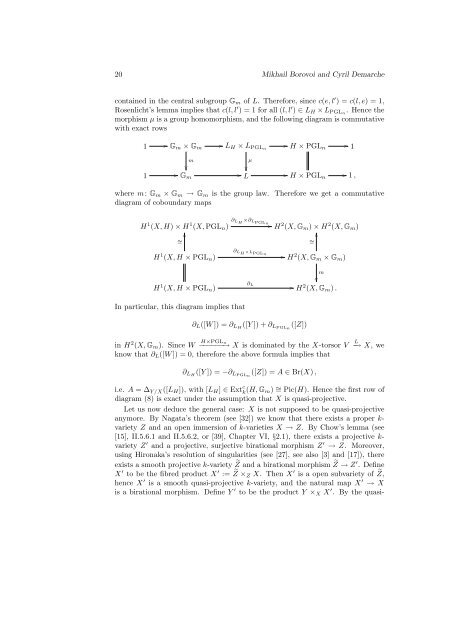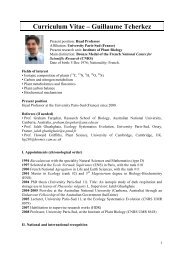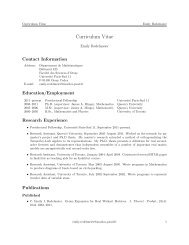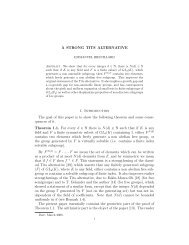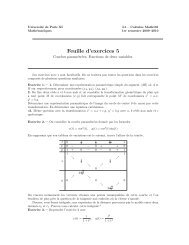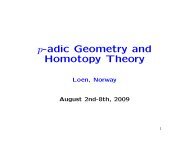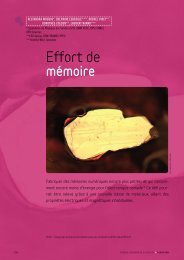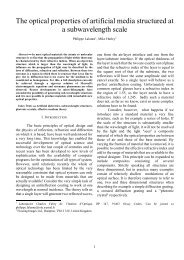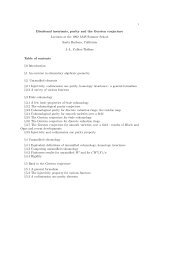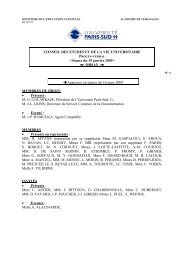Manin obstruction to strong approximation for homogeneous spaces
Manin obstruction to strong approximation for homogeneous spaces
Manin obstruction to strong approximation for homogeneous spaces
You also want an ePaper? Increase the reach of your titles
YUMPU automatically turns print PDFs into web optimized ePapers that Google loves.
20 Mikhail Borovoi and Cyril Demarchecontained in the central subgroup G m of L. There<strong>for</strong>e, since c(e, l ′ ) = c(l, e) = 1,Rosenlicht’s lemma implies that c(l, l ′ ) = 1 <strong>for</strong> all (l, l ′ ) ∈ L H × L PGLn . Hence themorphism µ is a group homomorphism, and the following diagram is commutativewith exact rows1 G m × G m L H × L PGLnH × PGL n 1mµ1 G m L H × PGL n 1 ,where m: G m × G m → G m is the group law. There<strong>for</strong>e we get a commutativediagram of coboundary mapsH 1 (X, H) × H 1 (X, PGL n ) ∂ L H ×∂ LPGLn H 2 (X, G m ) × H 2 (X, G m )∼ =∼ =H 1 (X, H × PGL n )H 1 (X, H × PGL n )∂ LH ×L PGLn H 2 (X, G m × G m )m∂ L H 2 (X, G m ) .In particular, this diagram implies that∂ L ([W ]) = ∂ LH ([Y ]) + ∂ LPGLn ([Z])in H 2 (X, G m ). Since W −−−−−−→ H×PGLnX is dominated by the X-<<strong>strong</strong>>to</<strong>strong</strong>>rsor Vknow that ∂ L ([W ]) = 0, there<strong>for</strong>e the above <strong>for</strong>mula implies thatL −→ X, we∂ LH ([Y ]) = −∂ LPGLn ([Z]) = A ∈ Br(X) ,i.e. A = ∆ Y/X ([L H ]), with [L H ] ∈ Ext c k(H, G m ) ∼ = Pic(H). Hence the first row ofdiagram (8) is exact under the assumption that X is quasi-projective.Let us now deduce the general case: X is not supposed <<strong>strong</strong>>to</<strong>strong</strong>> be quasi-projectiveanymore. By Nagata’s theorem (see [32]) we know that there exists a proper k-variety Z and an open immersion of k-varieties X → Z. By Chow’s lemma (see[15], II.5.6.1 and II.5.6.2, or [39], Chapter VI, §2.1), there exists a projective k-variety Z ′ and a projective, surjective birational morphism Z ′ → Z. Moreover,using Hironaka’s resolution of singularities (see [27], see also [3] and [17]), thereexists a smooth projective k-variety ˜Z and a birational morphism ˜Z → Z ′ . DefineX ′ <<strong>strong</strong>>to</<strong>strong</strong>> be the fibred product X ′ := ˜Z × Z X. Then X ′ is a open subvariety of ˜Z,hence X ′ is a smooth quasi-projective k-variety, and the natural map X ′ → Xis a birational morphism. Define Y ′ <<strong>strong</strong>>to</<strong>strong</strong>> be the product Y × X X ′ . By the quasi-


